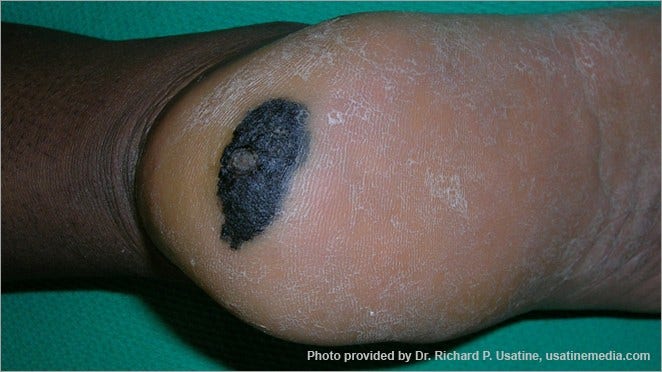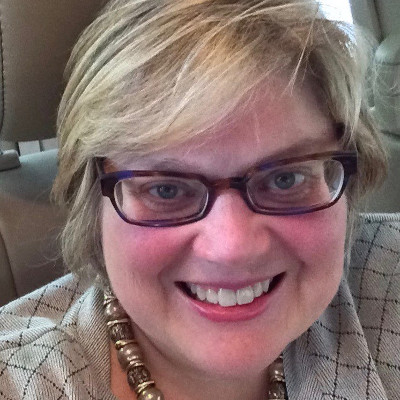Study: Lack of Education About Melanoma May Contribute to Black-White Survival Disparities

Skin that makes more melanin is naturally darker and provides more protection from the sun’s UV radiation than light skin. But not all types of melanoma are related to UV radiation exposure. Your genes or other factors may have a role in your risk for it.
It’s true that people with darker skin have a lower risk of melanoma. But as a recent study of non-Hispanic Black Americans showed, it’s also true that non-Hispanic Black Americans are more likely to have lower survival rates when they are diagnosed. That’s partly because compared with non-Hispanic whites, people with darker skin are more often diagnosed with later-stage melanoma (after it’s spread). It’s also because the most common type of melanoma among non-Hispanic Blacks — called acral lentiginous melanoma (ALM) — has a lower survival rate.
This type of melanoma tends to occur on the palms of the hands, soles of the feet, or under the nails. Those are not obvious places people think to check for skin cancer. The co-authors of the study, MaryBeth B. Culp, MPH, from the American Cancer Society and Natasha Buchanan Lunsford, PhD, from the Centers for Disease Control, believe education could lead Blacks to get skin checks from their doctors more regularly. They also hope better education will help health care providers spot potential skin cancers faster.
Culp and Lunsford studied the diagnosis and survival rates of about 1,800 non-Hispanic Black Americans with melanoma and compared them to rates in non-Hispanic whites. As has been found in other studies, the most common type identified in non-Hispanic Blacks was ALM. Both non-Hispanic Blacks and whites were diagnosed with ALM, but the proportion was much higher in Blacks—46% compared with 2%.
The study found:
- Five years after their diagnosis of melanoma, about 90 out of every 100 non-Hispanic whites were still alive, compared with about 66 out of every 100 non-Hispanic Blacks .
Warning Signs of ALM

- A new streak in a toenail or fingernail that wasn't caused by an accident or bruise
- A streak that’s damaged the nail
- A changing spot in, or connected to, a mole
- An irregularly-shaped growth that’s changing, growing, or has an unusual color
- A raised, thickened patch growing on the sole of the foot or palm of the hand
- If you have any questions about a spot on your skin, see your doctor right away so they can check it out.
- Even when cancer was found at an early stage (before it had spread), on average Blacks didn’t survive as long as whites.
- The researchers found that most often melanoma was on the legs and feet of Blacks, places that are associated with a lower survival rate. After 5 years, about 82 out of every 100 non-Hispanic Blacks with melanoma on an arm or hand were still living, compared with about 68 out of every 100 people who had it on a leg or foot.
- More non-Hispanic Blacks (16%) than non-Hispanic whites (5%) were diagnosed after the melanoma had spread far from its starting point, which decreases the survival rate.
“One possible reason for the delay in diagnosis is that the types of melanoma most common on dark-skinned people don’t match the ABCDE (asymmetry, border, color, diameter, evolving) guidelines for examining moles,” ACS Senior Associate Scientist Culp says. “That leaves people not knowing what to look for during skin self-checks or when to see a dermatologist. We have to do better job teaching people because an early diagnosis gives the best chance for successful treatment.”




